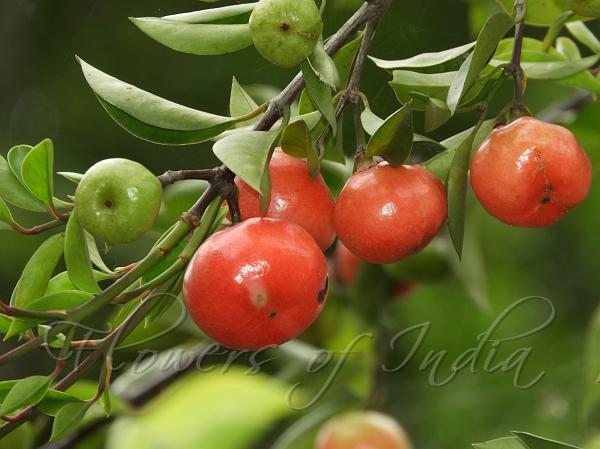|
| Lanceleaf Garcinia |
|

|

| File size | 621149 |
| Original date | 5/23/18 11:58 AM |
| Resolution | 5184 x 3888 |
| Flash | Flash fired |
| Focal length | 107.5mm |
| Exposure time | 1/200s |
| Aperture | 5.6 |
| Focus Distance | |
| Metering Mode | Multi-segment |
| Camera make | NIKON |
| Camera model | COOLPIX B700 |
| Sensor type |
|
|
|
|
Photo: |
Botanical name: Garcinia lanceifolia Family: Clusiaceae (Garcinia family)
Synonyms: Garcinia gracilis, Stalagmitis lanceifolia
Synonyms: Garcinia gracilis, Stalagmitis lanceifolia
Lanceleaf Garcinia is an evergreen, hairless shrub,
growing up to a height of 5 m. Leaves are alternate, lanceshaped with
shiny appearance. Flowers are pink in colour and are borne in clusters.
Inflorescence is polygamous, tetramerous, consisting of male and
hermaphrodite flowers. Male flowers are 1-2, mid-at branch-ends, with
thick oblong fleshy sepals and smaller petals. Stamens are oblique,
about 40 in number and are arranged in a hairless mass which contains
four celled anthers. Hermaphrodite flowers are at branch-ends or in
leaf-axils, larger than male flowers, staminoids arranged in 4 bundles
of 4-5 each; ovary ovoid, 6-8 stigmatic rays and glandular. Fruits are
smooth, obovoid, fleshy with 4-6 segments, each segment containing a
seed. Lanceleaf Garcinia is found in Flowering: October-December.
Medicinal uses: Since long ago, different
ethnic communities of NE India have been using this plant as a pain
reliever and hypoglycemic agent. Ripe fruits are eaten raw or dried and
are considered to be effective against diarrhea.
Since long ago, different
ethnic communities of NE India have been using this plant as a pain
reliever and hypoglycemic agent. Ripe fruits are eaten raw or dried and
are considered to be effective against diarrhea.
Medicinal uses:
 Since long ago, different
ethnic communities of NE India have been using this plant as a pain
reliever and hypoglycemic agent. Ripe fruits are eaten raw or dried and
are considered to be effective against diarrhea.
Since long ago, different
ethnic communities of NE India have been using this plant as a pain
reliever and hypoglycemic agent. Ripe fruits are eaten raw or dried and
are considered to be effective against diarrhea. | Identification credit: Momang Taram | Photographed in Upper Subansiri Distt., Arunachal Pradesh. |
• Is this flower misidentified? If yes,